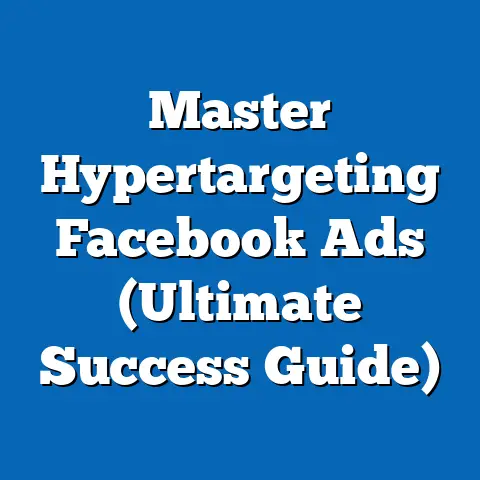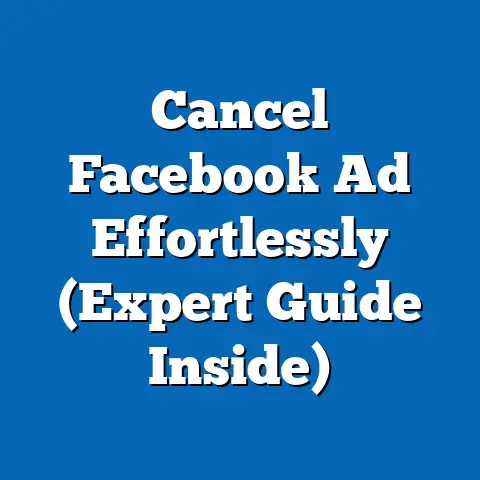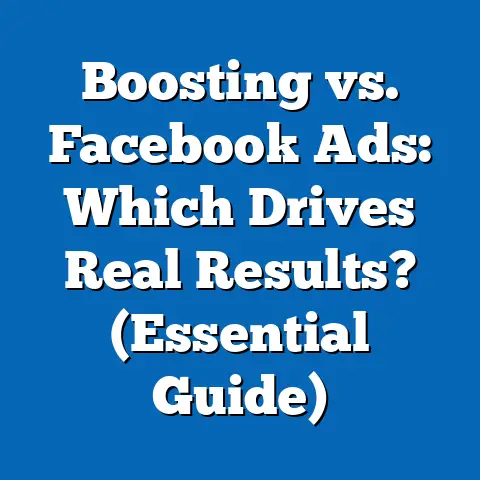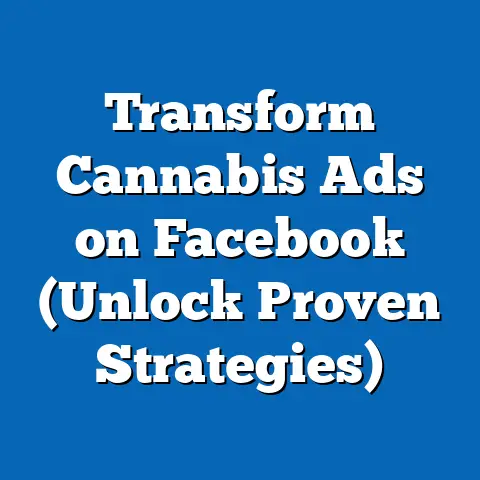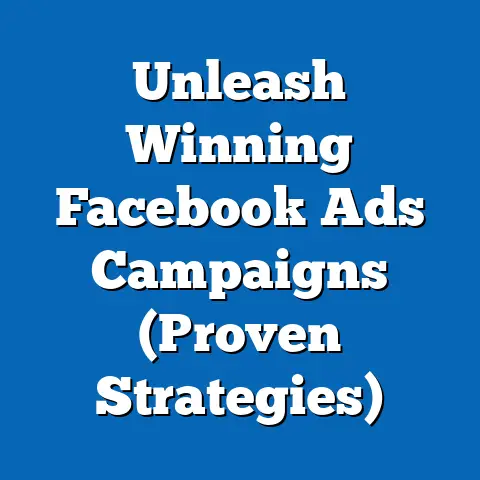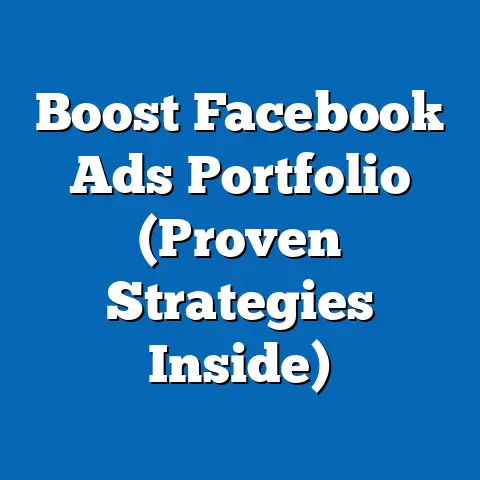Decoding Russian Facebook Ads (Insider Strategies Revealed)
I’ve spent years immersed in the world of digital advertising, and I’ve seen firsthand how a well-crafted campaign can transform a business. In today’s economic climate, where every penny counts, the importance of energy savings is paramount. For businesses offering energy-saving products and services, effective advertising isn’t just a luxury; it’s a necessity. It’s about reaching the right audience with the right message, and that’s where Facebook ads come in.
Facebook, with its massive user base and sophisticated targeting capabilities, presents a goldmine of opportunity for businesses, particularly in the energy sector. But cracking the code to successful Facebook advertising, especially in a unique market like Russia, requires more than just basic knowledge. It demands a deep understanding of the audience, the cultural nuances, and the regulatory environment.
That’s precisely what I aim to unravel in this article. I’m going to take you behind the scenes and reveal the insider strategies used by successful Russian advertisers on Facebook. We’ll delve into the intricacies of crafting compelling ad content, targeting the right audience, managing budgets effectively, and optimizing campaigns for maximum ROI. By the end of this guide, you’ll have a comprehensive understanding of how to leverage Facebook ads to drive awareness, generate leads, and boost sales for your energy-saving products and services in the Russian market.
Understanding the Russian Market
Before diving into the technical aspects of Facebook advertising, it’s crucial to understand the landscape of the Russian market. It’s not just about translating your existing campaigns; it’s about adapting your approach to resonate with the specific needs, preferences, and cultural sensitivities of Russian consumers.
Demographics and Behavior
The Russian Facebook user base is a diverse group, but understanding its general demographic profile can provide valuable insights. According to Statista, as of January 2024, Russia has a significant number of Facebook users, with a substantial portion falling within the 25-34 age range. This demographic is often tech-savvy and open to new ideas, making them a prime target for energy-saving products.
Behaviorally, Russians are increasingly engaging with online content, including ads. However, they are also discerning consumers who value authenticity and transparency. In the context of energy efficiency and sustainability, they are often motivated by a combination of factors, including cost savings, environmental concerns, and a desire to improve their quality of life.
From my experience, visual storytelling is incredibly powerful in Russia. Ads that showcase the tangible benefits of energy-saving products, such as lower utility bills or a more comfortable home environment, tend to perform well. It’s also important to highlight the long-term value and reliability of your products, as Russians often prioritize durability and quality.
Cultural Nuances
Culture plays a significant role in shaping consumer behavior, and Russia is no exception. When crafting your Facebook ads, it’s essential to be aware of the cultural nuances that can influence how your message is received.
One key aspect is the emphasis on community and family. Ads that highlight the benefits of energy savings for the entire household or community tend to resonate well. Another important factor is the respect for tradition and history. While Russians are open to innovation, they also value their cultural heritage.
In the context of energy conservation, it’s important to avoid overly aggressive or alarmist messaging. Instead, focus on positive and aspirational themes, such as creating a more sustainable future for future generations. For instance, instead of saying “You’re wasting energy!”, try “Invest in a brighter future with energy-efficient solutions.”
I’ve also learned that humor can be a powerful tool, but it’s crucial to use it judiciously and be mindful of cultural sensitivities. What might be considered funny in one culture could be offensive in another. When in doubt, it’s always best to err on the side of caution and consult with local experts to ensure your messaging is appropriate.
Regulatory Environment
Advertising in Russia is subject to specific regulations, particularly concerning energy products and services. It’s crucial to be aware of these regulations to avoid legal issues and maintain a positive brand image.
The Federal Law on Advertising governs advertising practices in Russia and sets out specific requirements for different types of products and services. For energy-related products, it’s important to ensure that your ads are accurate, truthful, and not misleading. You should also be prepared to provide supporting documentation to substantiate any claims you make about energy savings or efficiency.
Additionally, it’s important to be mindful of regulations concerning environmental claims. If you are promoting your products as environmentally friendly, you should be able to demonstrate that they meet specific environmental standards.
Navigating the regulatory landscape can be challenging, so it’s always a good idea to consult with legal professionals who specialize in advertising law in Russia. They can help you ensure that your ads comply with all applicable regulations and avoid any potential pitfalls.
Takeaway: Understanding the Russian market requires a deep dive into its demographics, cultural nuances, and regulatory environment. Tailoring your approach to resonate with these specific factors is crucial for successful Facebook advertising.
Crafting Compelling Ad Content
Once you have a solid understanding of the Russian market, the next step is to craft compelling ad content that grabs attention, resonates with your target audience, and drives conversions. This involves developing a strong message, selecting impactful visuals, and crafting a clear and persuasive call to action.
Message Development
The message is the heart of your ad, and it’s what ultimately determines whether or not your audience will take action. When crafting your message for Russian consumers, it’s important to focus on the benefits of energy savings and sustainability.
Highlight the tangible benefits of your products, such as lower utility bills, increased comfort, and a reduced environmental impact. Use clear and concise language that is easy to understand and avoid technical jargon.
Here are some examples of successful ad copy from Russian brands in the energy sector:
- “Save money and protect the environment with our energy-efficient windows. Enjoy a warmer home and lower heating bills this winter!” This ad copy focuses on both cost savings and environmental benefits, appealing to a wide range of consumers.
- “Upgrade your home with our smart thermostat and save up to 30% on your energy bill. Control your home’s temperature from anywhere with our easy-to-use app.” This ad copy highlights the convenience and cost-effectiveness of a smart thermostat.
- “Invest in solar panels and generate your own clean energy. Reduce your carbon footprint and become energy independent.” This ad copy appeals to environmentally conscious consumers who are looking for long-term solutions.
From my experience, storytelling can be incredibly effective in Russia. Share stories of real people who have benefited from your products or services. This can help build trust and credibility and make your message more relatable.
Visual Elements
Visuals are a critical component of Facebook ads, and they play a key role in capturing attention and conveying your message. When selecting visuals for your Russian Facebook ads, it’s important to choose images that are relevant, appealing, and culturally appropriate.
Use high-quality images that showcase your products in a positive light. If you are promoting energy-efficient windows, for example, use images that show a bright and comfortable home with natural light streaming in.
It’s also important to consider the color palette and design elements of your visuals. In Russia, colors like blue and green are often associated with nature and sustainability, while warm colors like red and orange can convey energy and excitement.
Here are some examples of effective design strategies for energy-efficient ads:
- Showcase the product in a real-life setting: This helps consumers visualize how the product would fit into their own lives.
- Use before-and-after images: This can effectively demonstrate the impact of your product on energy consumption.
- Incorporate data visualizations: Charts and graphs can effectively communicate the cost savings and environmental benefits of your products.
I’ve found that videos often perform exceptionally well on Facebook. Create short, engaging videos that showcase the benefits of your products and tell a compelling story.
Call to Action (CTA)
The call to action is the final element of your ad, and it’s what prompts your audience to take the desired action. A strong CTA is clear, concise, and persuasive, and it tells your audience exactly what you want them to do.
Here are some examples of effective CTAs used in Russian Facebook ads related to energy products:
- “Learn More”: This is a good option for consumers who are interested in learning more about your products or services.
- “Get a Free Quote”: This is a great option for generating leads and providing personalized information.
- “Shop Now”: This is a good option for driving immediate sales.
- “Download Our Guide”: This is a great way to provide valuable information and capture leads.
- “Contact Us”: This is a good option for consumers who have specific questions or need assistance.
From my experience, it’s important to test different CTAs to see which ones perform best with your target audience. You can use Facebook’s A/B testing tools to compare the performance of different CTAs and optimize your ads accordingly.
Takeaway: Crafting compelling ad content involves developing a strong message, selecting impactful visuals, and crafting a clear and persuasive call to action. Tailoring your content to resonate with the specific needs and preferences of Russian consumers is crucial for success.
Targeting the Right Audience
Even the most compelling ad content will fall flat if it’s not shown to the right audience. Facebook’s targeting capabilities are incredibly powerful, allowing you to reach specific demographics, interests, and behaviors. In the Russian market, effective audience segmentation is essential for maximizing your ad performance.
Audience Segmentation
Facebook allows you to segment your audience based on a wide range of criteria, including:
- Demographics: Age, gender, location, education, income, etc.
- Interests: Hobbies, passions, activities, etc.
- Behaviors: Purchase history, online activity, device usage, etc.
When targeting Russian consumers interested in energy savings, consider the following demographics, interests, and behaviors:
- Demographics: Target homeowners, families with children, and individuals in higher income brackets who are more likely to invest in energy-efficient solutions.
- Interests: Target individuals interested in topics such as environmentalism, sustainability, home improvement, and technology.
- Behaviors: Target individuals who have recently purchased home appliances, searched for energy-efficient products online, or expressed interest in renewable energy.
I’ve found that creating multiple audience segments based on different combinations of these criteria can be highly effective. This allows you to tailor your ad content to the specific needs and preferences of each segment.
For example, you could create one audience segment targeting homeowners interested in saving money on their energy bills and another segment targeting environmentally conscious consumers who are looking for sustainable solutions.
Custom Audiences and Lookalike Audiences
Facebook also allows you to create custom audiences based on your existing customer data. This can be a powerful way to reach your most loyal customers and generate repeat business.
You can upload your customer email list, phone numbers, or website visitor data to create a custom audience. Facebook will then match this data with its user base and create an audience of individuals who are already familiar with your brand.
In addition to custom audiences, you can also create lookalike audiences. Lookalike audiences are based on the characteristics of your existing customers, and they allow you to reach new customers who are likely to be interested in your products or services.
To create a lookalike audience, you simply select your custom audience as the source and specify the desired size of the lookalike audience. Facebook will then use its algorithms to identify individuals who share similar characteristics with your existing customers.
I’ve seen firsthand how effective custom and lookalike audiences can be in boosting ad performance. By targeting individuals who are already familiar with your brand or who share similar characteristics with your existing customers, you can significantly increase your conversion rates.
Retargeting Strategies
Retargeting is a powerful strategy for maintaining engagement and conversion rates. It involves showing ads to individuals who have previously interacted with your brand, such as visiting your website or engaging with your Facebook page.
Retargeting can be particularly effective for energy-saving products, as consumers often need time to research and consider their options before making a purchase. By retargeting individuals who have shown interest in your products, you can keep your brand top of mind and increase the likelihood of a conversion.
Here are some examples of retargeting strategies for energy-saving products:
- Show ads to individuals who have visited your website but haven’t made a purchase.
- Show ads to individuals who have added products to their shopping cart but haven’t completed the checkout process.
- Show ads to individuals who have engaged with your Facebook page but haven’t visited your website.
From my experience, it’s important to tailor your retargeting ads to the specific actions that individuals have taken. For example, if someone has visited your website but hasn’t made a purchase, you could show them ads that highlight the benefits of your products or offer a special discount.
Takeaway: Targeting the right audience is crucial for successful Facebook advertising. Effective audience segmentation, custom audiences, lookalike audiences, and retargeting strategies can help you reach the most receptive consumers and maximize your ad performance.
Budgeting and Bidding Strategies
Setting the right budget and choosing the appropriate bidding strategy are critical for maximizing your return on investment on Facebook. In Russia, where the advertising landscape can be competitive, it’s important to develop a well-informed strategy that aligns with your business goals.
Setting the Budget
Establishing an effective budget for your Facebook ads in Russia requires careful consideration of several factors, including:
- Market Competition: The level of competition in your industry can significantly impact your advertising costs. If there are many businesses competing for the same audience, you may need to increase your budget to stand out.
- Ad Objectives: Your advertising goals will also influence your budget. If you are aiming to generate leads, you may need to spend more than if you are simply trying to increase brand awareness.
- Target Audience Size: The size of your target audience will also affect your budget. If you are targeting a very specific niche, you may be able to get away with a smaller budget than if you are targeting a broader audience.
- Ad Performance: Your ad performance should be continuously monitored, and your budget should be adjusted accordingly. If your ads are performing well, you may want to increase your budget to reach more people. If they are not performing well, you may need to decrease your budget or adjust your targeting.
From my experience, it’s often best to start with a smaller budget and gradually increase it as you see positive results. This allows you to test different strategies and optimize your ads without risking a significant amount of money.
Bidding Techniques
Facebook offers a variety of bidding strategies that can impact your ad performance. The two main bidding strategies are:
- Cost-Per-Click (CPC): With CPC bidding, you pay each time someone clicks on your ad. This is a good option if your goal is to drive traffic to your website or generate leads.
- Cost-Per-Impression (CPM): With CPM bidding, you pay for every 1,000 times your ad is shown. This is a good option if your goal is to increase brand awareness or reach a large audience.
In the context of energy-saving ads, CPC bidding can be effective if you are trying to drive traffic to your website or generate leads. CPM bidding can be a good option if you are trying to increase brand awareness or reach a large audience of environmentally conscious consumers.
Facebook also offers automated bidding strategies that can help you optimize your ad performance. These strategies use machine learning to automatically adjust your bids based on your advertising goals.
I’ve found that automated bidding strategies can be particularly effective for businesses that are new to Facebook advertising or that don’t have the time to manually manage their bids.
Measuring ROI
Measuring the return on investment (ROI) for your Facebook ads is crucial for determining whether or not your advertising efforts are paying off. There are several key performance indicators (KPIs) that you can track to measure your ROI, including:
- Cost-Per-Click (CPC): This measures the cost of each click on your ad.
- Cost-Per-Lead (CPL): This measures the cost of each lead generated by your ad.
- Conversion Rate: This measures the percentage of people who click on your ad and then take the desired action, such as making a purchase.
- Return on Ad Spend (ROAS): This measures the amount of revenue generated for every dollar spent on advertising.
By tracking these KPIs, you can gain valuable insights into the performance of your Facebook ads and make informed decisions about how to optimize your campaigns.
From my experience, it’s important to set clear goals for your Facebook ads and track your progress towards those goals on a regular basis. This will help you stay on track and ensure that you are getting the most out of your advertising budget.
Takeaway: Budgeting and bidding strategies are crucial for maximizing your ROI on Facebook. Setting the right budget and choosing the appropriate bidding strategy requires careful consideration of market competition, ad objectives, target audience size, and ad performance.
Analyzing and Optimizing Campaigns
The journey of Facebook advertising doesn’t end with launching your campaign. It’s an ongoing process of analysis and optimization to ensure that your ads are performing at their best. By continuously monitoring your ad performance and making adjustments based on data, you can maximize your ROI and achieve your advertising goals.
Data Analysis Tools
Facebook provides a wealth of data and analytics tools that you can use to track the performance of your ads. These tools allow you to monitor key metrics such as impressions, clicks, conversions, and cost-per-click.
Facebook Ads Manager is the primary tool for analyzing your ad performance. It provides a comprehensive overview of your campaign performance, allowing you to see how your ads are performing across different demographics, interests, and behaviors.
Facebook Analytics is another valuable tool that allows you to track user behavior on your website and app. This can help you understand how your Facebook ads are driving traffic to your website and how users are interacting with your content.
From my experience, it’s important to regularly review your Facebook Ads Manager and Facebook Analytics data to identify areas for improvement. Look for trends and patterns in your data and use these insights to make informed decisions about how to optimize your campaigns.
A/B Testing
A/B testing is a powerful technique for optimizing your ad campaigns. It involves creating two versions of an ad with slight variations and then testing them against each other to see which one performs better.
You can A/B test a variety of elements in your ads, including:
- Testing different headlines: One company tested two headlines for their energy-efficient windows ad: “Save Money on Your Energy Bills” and “Enjoy a Warmer Home This Winter”. The headline “Enjoy a Warmer Home This Winter” performed better, suggesting that consumers were more motivated by comfort than cost savings.
- Testing different images: Another company tested two images for their solar panel ad: one showing a solar panel installation on a rooftop and another showing a family enjoying a sunny day. The image showing the family enjoying a sunny day performed better, suggesting that consumers were more motivated by the lifestyle benefits of solar panels than the technical aspects of installation.
- Testing different calls to action: A company tested two calls to action for their smart thermostat ad: “Learn More” and “Get a Free Quote”. The call to action “Get a Free Quote” performed better, suggesting that consumers were more motivated by the opportunity to receive personalized information.
From my experience, A/B testing is an essential part of any successful Facebook advertising campaign. By continuously testing different elements of your ads, you can identify what works best and optimize your campaigns for maximum performance.
Continuous Improvement
The digital landscape is constantly evolving, and Facebook advertising is no exception. New features, targeting options, and bidding strategies are constantly being introduced, so it’s important to stay up-to-date with the latest trends and best practices.
In addition to staying informed about the latest changes, it’s also important to continuously monitor your ad performance and make adjustments based on the data. What worked well yesterday may not work as well tomorrow, so it’s important to be flexible and adapt your strategy as needed.
From my experience, the key to success in Facebook advertising is continuous improvement. By regularly analyzing your ad performance, A/B testing different elements, and staying up-to-date with the latest trends, you can maximize your ROI and achieve your advertising goals.
Takeaway: Analyzing and optimizing your campaigns is an ongoing process that requires continuous monitoring, A/B testing, and adaptation. By using Facebook’s data analysis tools and staying up-to-date with the latest trends, you can maximize your ROI and achieve your advertising goals.
Conclusion
Throughout this guide, I’ve shared insider strategies for decoding Russian Facebook ads, particularly in the context of promoting energy-saving products and services. We’ve explored the importance of understanding the Russian market, crafting compelling ad content, targeting the right audience, managing budgets effectively, and analyzing and optimizing campaigns for maximum ROI.
To recap, here are the key insights you should take away:
- Understand the Russian market: Adapt your approach to resonate with the specific needs, preferences, and cultural sensitivities of Russian consumers.
- Craft compelling ad content: Develop a strong message, select impactful visuals, and craft a clear and persuasive call to action.
- Target the right audience: Use Facebook’s powerful targeting capabilities to reach specific demographics, interests, and behaviors.
- Manage budgets effectively: Set the right budget and choose the appropriate bidding strategy to maximize your ROI.
- Analyze and optimize campaigns: Continuously monitor your ad performance and make adjustments based on data to ensure that your ads are performing at their best.
Now, I encourage you to take these insider strategies and implement them in your own advertising efforts. The Russian market presents a significant opportunity for businesses offering energy-saving products and services, and by leveraging Facebook ads effectively, you can tap into this potential and achieve your business goals.
Remember, Facebook advertising is an ever-evolving landscape. Stay curious, keep learning, and always be willing to adapt your strategy based on data and feedback. By doing so, you can unlock the full potential of Facebook advertising and drive significant growth for your business.
I believe that Facebook advertising has the power to promote energy efficiency in Russia and contribute to a more sustainable future. By using these strategies and staying committed to continuous improvement, you can play a part in creating a brighter, more energy-conscious world.

